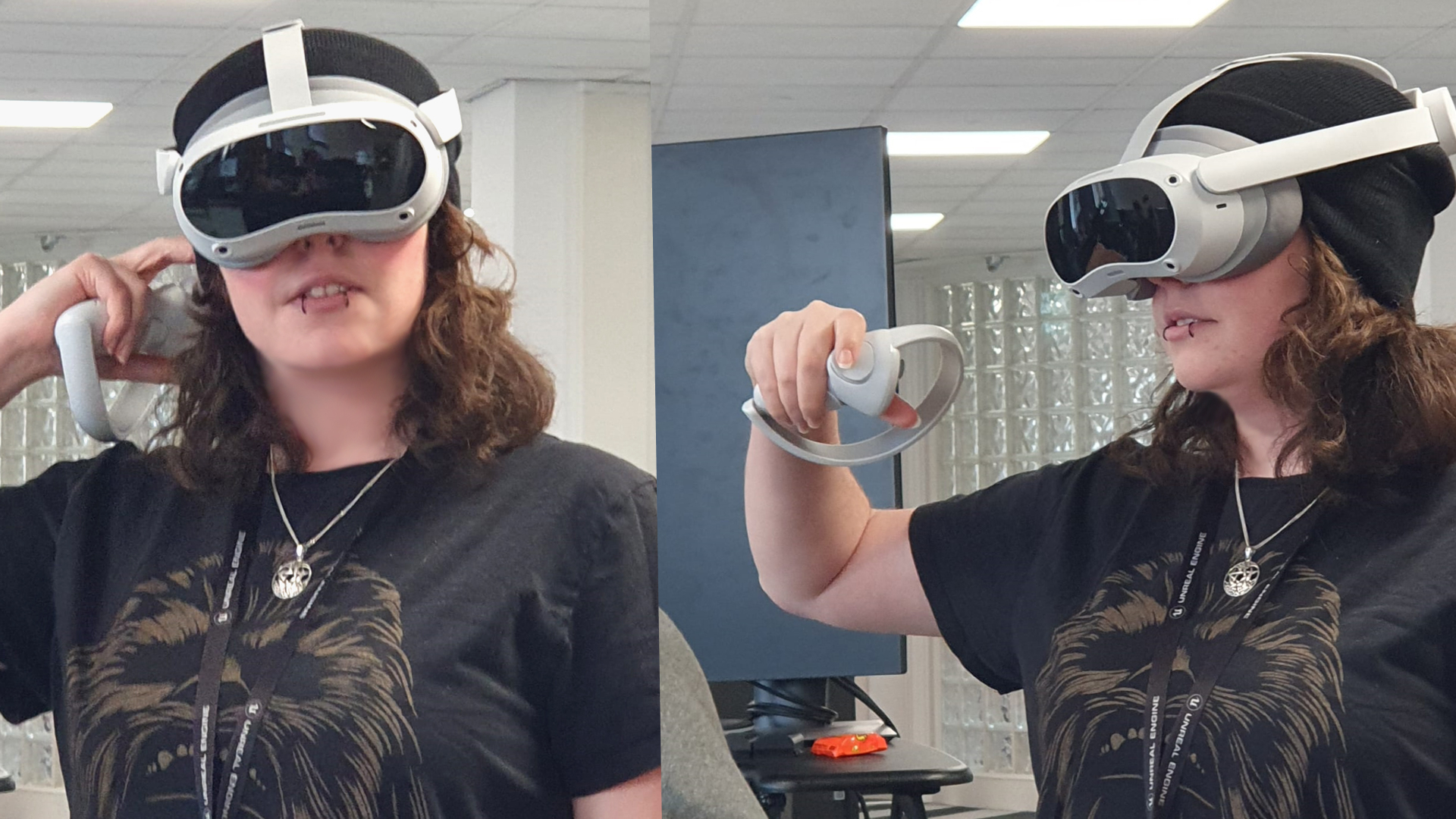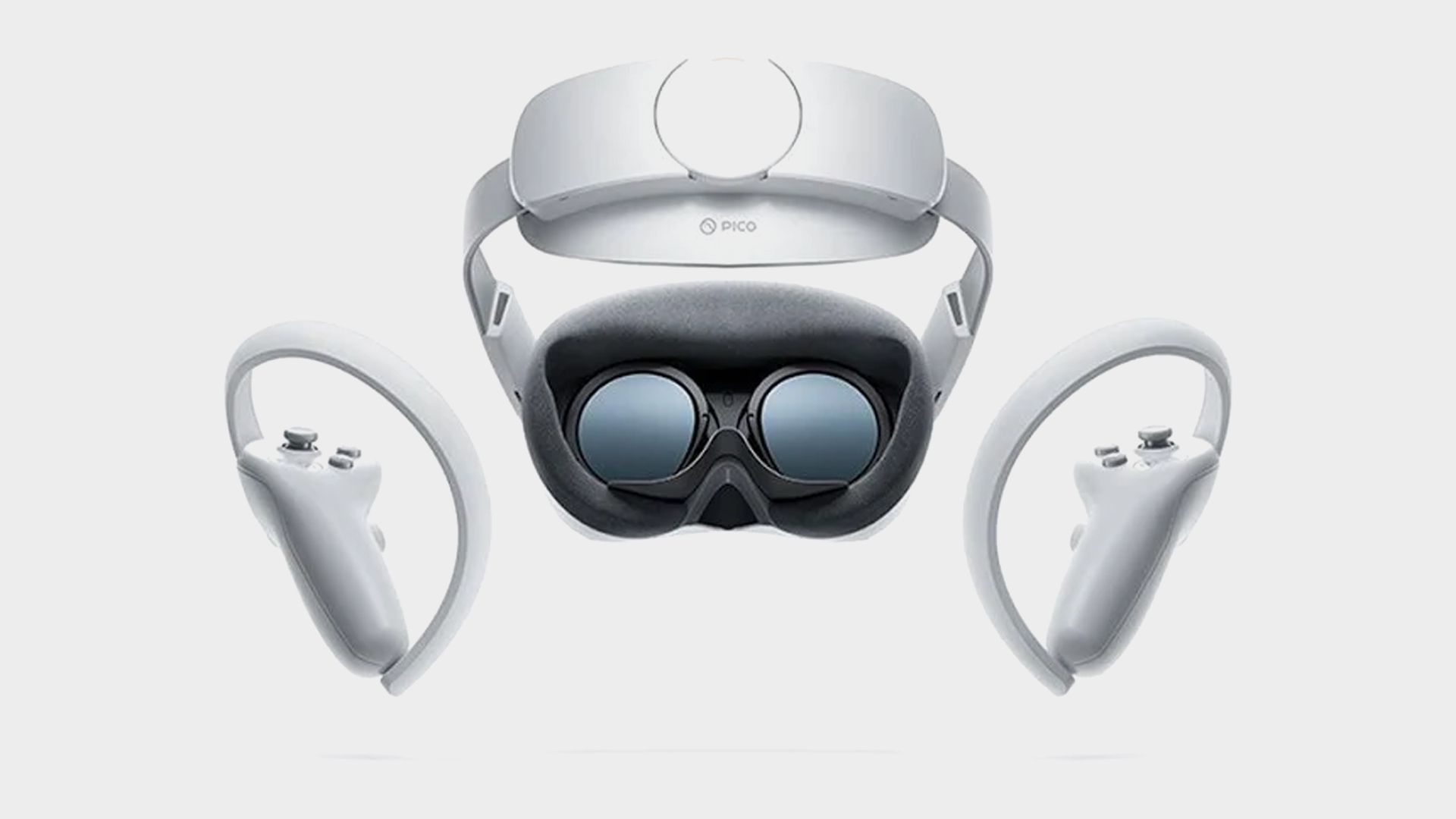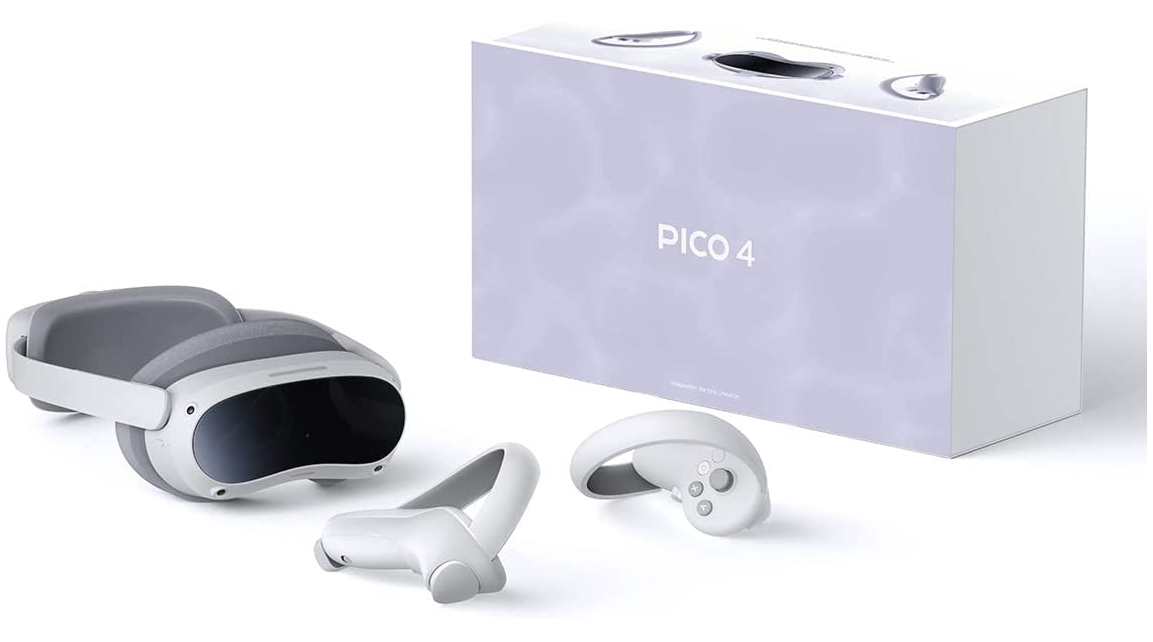Our Verdict
The Pico 4 is a supremely strong contender for the VR throne, with an impeccable performance to price ratio and some great quality of life features, though its limited availability really holds it back.
For
- Crisp visuals
- Cute controller design
- Aces price to performance
- Accurate tracking
- Easy IPD and headset adjustment
- Great colour passthrough
Against
- Difficult to buy in the US
- A little front weighted
- Struggles a bit streaming wirelessly
PC Gamer's got your back
Powered by the same Snapdragon XR2 processor as the Meta Quest 2, the Pico 4 is an incredible contender for the entry-level VR throne. There's so much to like here, with every spec seeming to one-up its main competitor, and for less cash. Though, inevitably, there's a catch for would-be Pico 4 users on the US side—availability.
In the UK you can get hold of the Pico 4 for £380—twenty monies less than the new Quest 2 price tag. The 256GB version sits closer to Meta's higher-tier offering at £430.
Compare that to the similarly specced, mid-range HP Reverb G2 going for £655 even today, and it becomes abundantly clear that the standards are shifting in the VR space. You can get so much more for your money than Apple would probably have you believe, as ByteDance proves with the stunning Pico 4.
The major drawback for most of our readers, is that the Pico 4 isn't available to US users. Any Amazon listings you might see will sit at around $800, often with another $100 on top for international shipping. I would not recommend my North American friends pay that much for the Pico 4, but for those countries with availability, put on your bibs because ByteDance is serving pancakes.
Tracking: 6 DoF inside-out
Lens tech: Pancake
Resolution: 4320 x 2160 (2160p per eye)
Refresh Rate: 75–90Hz
Processor: Qualcomm Snapdragon XR2
FOV: 105~ degrees
IPD: 62-72mm
Audio: Dual mics, embedded speakers
Inputs: USB Type-C 3.2 Gen-1
Battery life: 5300mAh | 2hr 10min actual gaming
Weight: 10.4oz / 295g
Storage: 128GB/256GB
Price: 128GB £379 | 256GB £449
That's pancake lenses to be precise, the inedible kind. This lens tech involves folding together loads of lenses in a curved shape for some light-based magic, and frees up some processing power as the headset doesn't then have to digitally fix the distortion you find within standard fresnel lenses. Granted it does mean a smaller field of view, but I'm more than happy to forfeit a little peripheral vision for the privilege.
Couple such a technological marvel with that 4320 x 2160 resolution, and Pico 4 has the best visuals of any entry-level headset I've checked out. Compared to the Meta Quest 2's fresnel lenses, those pancakes taste pretty sweet. Along with a much less prominent screen door effect, meaning the pixel grid can't be seen easily when you press your eyeballs against the glass, it's also less prone to chromatic aberration and ghosting issues. Essentially it's a much sharper, clearer viewing experience, especially when it comes to menus and the like.
Pico Link software integrates super easily with Steam, which you can grab and launch from inside the UI once everything's installed and running on your PC. It's as simple as selecting the machine you want to connect to, the mode (wired or wireless), and sticking the headset on. It's a smooth setup that's great for me as a time-poor gamer, and one made even easier by the absence of tracking base stations.
I'm actually pretty impressed with the Pico 4's 6DoF tracking implementation, too. I found it more accurate than, say, the much more expensive HTC Vive XR Elite. And although the Pico 4 doesn't come with extras like hand tracking, it nails the basics, and some. I was expecting so much less for the price, honestly.

Whether I was playing wired or wirelessly, the Pico 4 performed admirably, though it did struggle somewhat streaming more graphically intensive games. One time when I was trying to play Half Life: Alyx via the Pico's wireless PC connection, a humongous black square appeared, following my every laggy move, and blocking the scene altogether. That was the end of that gaming session.
As for No Man's Sky, it was a little jittery in combat. But switching the streaming assistant settings to 'smooth' helped it along greatly. I had no such issues playing with the included USB Type-C 2.0 data cable and, while the cable isn't the highest spec, it's more than long enough to play tethered and doesn't cost extra like many headsets—including the Quest 2—ask of users.
The Pico 4 is one of the most delightful entry-level VR experiences out there.
As for comfort, I was able to wear my glasses inside the headset with no issues, though there's a glasses spacer included in case you do have trouble. It's lighter than the Quest 2 at 295g, though it is a little front heavy. Thankfully the easy wheel adjustment and nose pad are great for relieving some of the pressure and keeping it in place without squeezing too hard.
The top headband is a little basic, and sometimes I do find the gasket pressing into my cheeks due to its shape, but it's certainly preferable to pressure in the sinus area.
The motorised IPD adjuster is great. Adjustable within the software, it even throws up a warning as the lenses physically close in on your nose, in case of potential discomfort. I didn't experience any myself, and the adjuster was great for getting everything into focus without faffing around with physical dials in awkward places.
The Pico also comes with the added benefit of a full colour passthrough, which doesn't suffer from any major depth perception issues, such as I found with the XR Elite. It's also got a little novelty control for the passthrough that had me tapping on the side of the headset and feeling very much like I was in a sci-fi movie.


Oh, and the slightly longer gaming battery life than the Quest 2, at just over 2 hours, goes a long way to taking this VR headset from good to great.
When it comes down to it, the higher capacity Pico 4 is certainly worth a look for our UK, Europe and East Asian compatriots for £430. That's because Pico 4's standalone VR library houses a ton of great games. And thanks to gaining full OpenXR compatibility this year, it's now got access to more games and apps than ever before. It's not that much more expensive to go big with storage, and it still does more than the Quest 2 for the same price.
Not only has ByteDance managed a lower price point for the lower capacity headset, it's done so with higher resolution per eye, a colour passthrough—as opposed to greyscale—and longer gaming battery life. Aside from a couple of sparse issues when streaming wirelessly, the biggest thing holding it back is availability for our US friends.
Looks like you'll just have to nab one on your next trip across the Atlantic if you want to actually acquire one for a reasonable price. How it will fare when Meta comes out with a next-gen Quest VR headset is unclear, but for now the Pico 4 is one of the most delightful entry-level VR experiences out there.
The Pico 4 is a supremely strong contender for the VR throne, with an impeccable performance to price ratio and some great quality of life features, though its limited availability really holds it back.

Screw sports, Katie would rather watch Intel, AMD and Nvidia go at it. Having been obsessed with computers and graphics for three long decades, she took Game Art and Design up to Masters level at uni, and has been rambling about games, tech and science—rather sarcastically—for four years since. She can be found admiring technological advancements, scrambling for scintillating Raspberry Pi projects, preaching cybersecurity awareness, sighing over semiconductors, and gawping at the latest GPU upgrades. Right now she's waiting patiently for her chance to upload her consciousness into the cloud.


